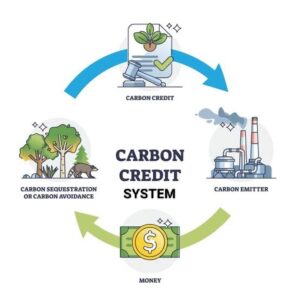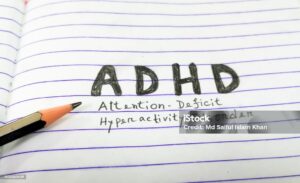Neural dysfunctions Neurological dysfunctions are abnormal conditions and/or impaired functioning of the brain and the nervous system which alters the efficiency of brain functions. These disorders not only affects the brain but the nerve as well, including the spinal cord resulting to abnormalities in the structure, biochemistry, or electrical functioning of the brain, resulting in a variety of symptoms, including pain, disorientation, paralysis, muscle weakness, loss of sensation, seizures, and changes in consciousness. Neurological disorders make it difficult for everyday movements. Our ability to move is a complex process involving many parts of our nervous system. Neurological disorders can disrupt this process, leading to problems in daily life. It’s important to know that these disorders are a major cause of disability and the second leading cause of death worldwide. (Mario Bernardo-Filho, et al. ) Numerous neurological dysfunctions stemming from the brain, spinal cord, and nerves result in a wide range of physical and psychological symptoms. Such disorders affect the overall functioning such as movement, sensation, communication, vision, hearing, thinking, and emotion, necessitating lifelong management and are often identified early in development, and symptoms manifest themselves physically, cognitively, emotionally. Dyslexia: Dyslexia, also known as Alexia, is an atypical combination of skills. It is a syndrome, meaning a group of related characteristics that differ in intensity from person to person. These traits include not only specific challenges but also, at times, unique strengths. Dyslexia is acknowledged as a specific learning disability with a neurological origin. The central component of dyslexia is in its phonological deficit which affects the way children link letters to sounds and decode words. This deficit is often detectable before children receive formal reading instructions. Dyslexia is heterogeneous in nature. In fact, it is not only characterized by phonological deficit but there are other language related challenges such as vocabulary and oral language skills. (Snowling MJ et al, 2020) In addition to reading, students may struggle with spelling and writing. (McBride & Rui En Cheah, 2021). Elliott (2020) argues that there is a lack of standardized criteria for diagnosing dyslexia which creates confusion about when and how to identify and provide intervention. This generates disorientation on who is to be identified as “dyslexic” as its identification depends on the methods used for diagnosis. (Elliott, 2020) Earlier, dyslexia was essentially a reading difficulty coupled with spelling and literacy, often referred to as “reading blindness” Over time, as research on dyslexic learners has expanded, the understanding of dyslexia has broadened, leading to modifications in its definitions. Various cognitive predictors apply to early reading and spelling (Sigmund et al., 2024). Although reading and spelling are significantly related to each other, they are different and dissociable skills important for development of literacy (Kim and Petscher 2023) Elliott has given four concepts of dyslexia. Firstly, it has often treated dyslexia as synonymous with the idea of reading disability, and difficulty in decoding in word-level. Assessments involve the use of word reading tests and is relatively straightforward, which does not require a battery of psychological tests. (Elliott, 2020) It is also a subgroup of poor decoders. Definitions from organizations such as the International Dyslexia Association emphasize its constitutional origin in neurology and highlight that dyslexia is a disorder related to language acquisition that runs in families with severe difficulties in reading, spelling, and writing words and sometimes in arithmetic. ) Lyon, Shaywitz, & Shaywitz, 2003, says that dyslexia has a neurobiological origin. However, researchers argue that this idea is an “outmoded notion” (Miciak & Fletcher, 2020, p. 7). Elliott also suggests dyslexia to be a persistent reading problem that doesn’t improve despite high-quality intervention. These people who do not respond to typical treatments will require alternative support. This idea comes with its own challenges. It is difficult to measure and determine when the issues are truly intractable and how long before a diagnosis can be done (Odegard et al., 2020). Dyslexia is neurodiverse. It goes far beyond difficulties in reading. It includes impairment in cognitive skills such as memory, attention. Such view suggests that individuals with dyslexia doesn’t necessarily have to have reading difficulties as it may involve other cognitive challenges and certain strengths. However, it also brings about a host of conceptual and ethical difficulties. (Holmqvist, 2020) Although there is a rise in publications, there is still no universally accepted definition of dyslexia. Thematic shifts indicate changing depths of focus rather than consensus (Helland, T., 2022) Symptoms & Characteristics: Symptoms of dyslexia include struggles with phonological awareness, decoding, processing, coding, short term memory, language skills, and comprehension across different age groups. It also affects cognitive skills such as memory. This condition may be linked to orthographic loop (letter-related) and morphological loop (vocabulary development) Essentially, characteristics of dyslexia may include poor decoding (difficulties with accurate reading and sound recognition) poor fluency (issues with speed, accuracy, expression, comprehension) poor spelling (challenges in phonological processing and memory that persists throughout life despite improvements in reading) poor reading comprehension (difficulties in decoding, fluency, phonological awareness) Research over time led to a new and evolved understanding of dyslexia. It is dynamic in nature and varies according to the individual. Development of dyslexia is influenced by neurodevelopmental changes, language and environment, including factors such as social and emotional characteristics (Wolf, M., Gotlieb et al, 2024) Causes: Dyslexia stems from a complex interplay of genetic & environmental factors as with most disorders with hereditary influence (Catts & Petscher, 2022) Dyslexia extends beyond written language. It can arise from various interacting impairments of cognitive skills (Werth, R.,2024). It can lead to challenges in cognitive functions such as concentration, attention span, internalizing knowledge, automating skills, and motor skills. A complex interplay of visual processing and neurological functions causes dyslexia with certain conditions that lead to reading disabilities. (Werth, R. 2023) Dyslexia is neurobiological in origin, meaning that the problem is located physically in the brain (Snow, Burns, & Griffin, 1998). Research suggests neuroanatomical and functional insights of dyslexia. For example, early theories claim dyslexia to be cause by an atypical hemispheric dominance,











